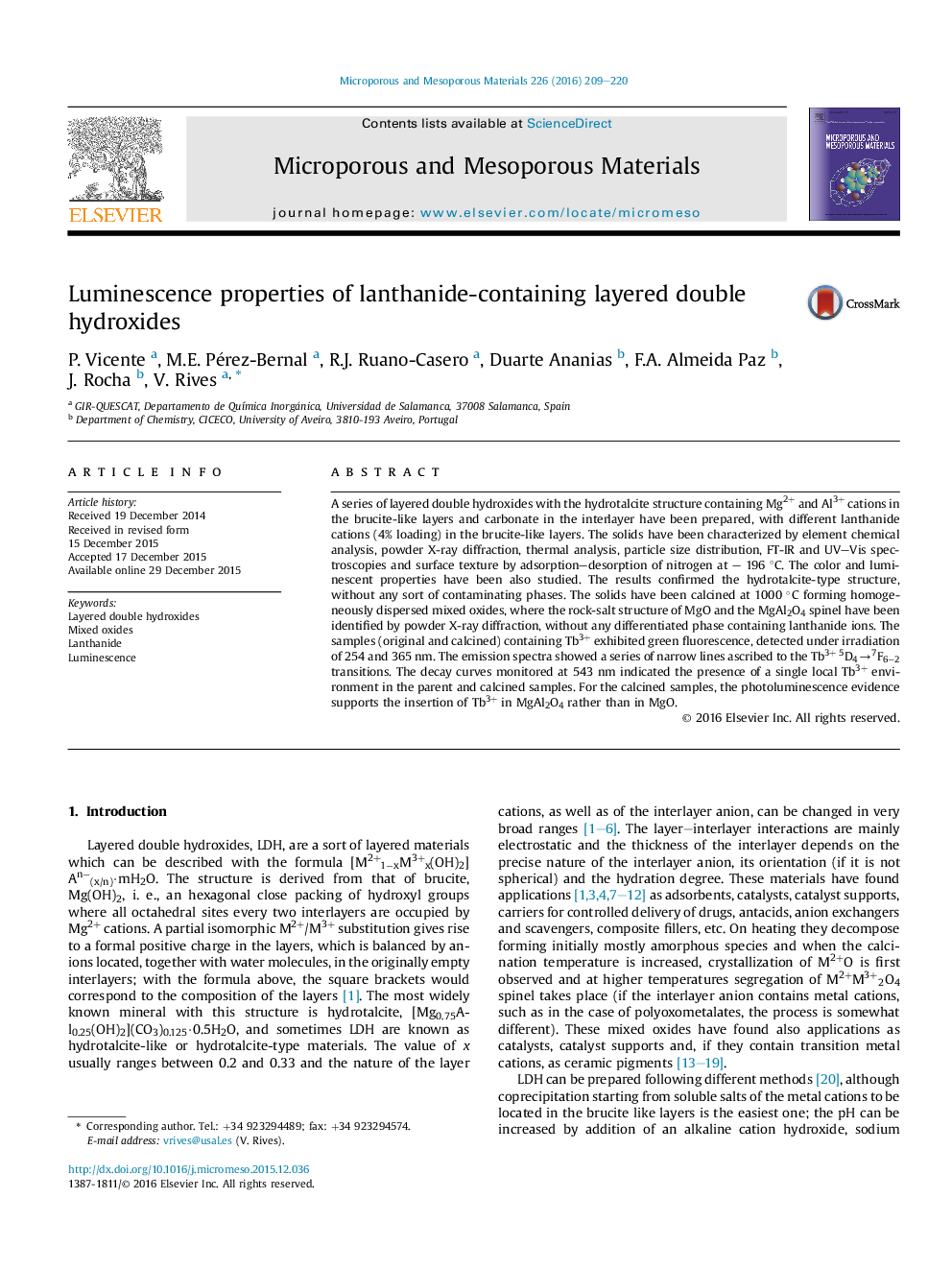| Article ID | Journal | Published Year | Pages | File Type |
|---|---|---|---|---|
| 72189 | Microporous and Mesoporous Materials | 2016 | 12 Pages |
•Lanthanide cations can be incorporated in a Mg, Al hydrotalcite without distortion.•Lanthanide cations are well dispersed in the mixed oxides formed upon calcination.•The Tb containing samples show a green fluorescence.•Formation of Tb4+ species decreases the luminescence intensity.
A series of layered double hydroxides with the hydrotalcite structure containing Mg2+ and Al3+ cations in the brucite-like layers and carbonate in the interlayer have been prepared, with different lanthanide cations (4% loading) in the brucite-like layers. The solids have been characterized by element chemical analysis, powder X-ray diffraction, thermal analysis, particle size distribution, FT-IR and UV–Vis spectroscopies and surface texture by adsorption–desorption of nitrogen at – 196 °C. The color and luminescent properties have been also studied. The results confirmed the hydrotalcite-type structure, without any sort of contaminating phases. The solids have been calcined at 1000 °C forming homogeneously dispersed mixed oxides, where the rock-salt structure of MgO and the MgAl2O4 spinel have been identified by powder X-ray diffraction, without any differentiated phase containing lanthanide ions. The samples (original and calcined) containing Tb3+ exhibited green fluorescence, detected under irradiation of 254 and 365 nm. The emission spectra showed a series of narrow lines ascribed to the Tb3+5D4→7F6−2 transitions. The decay curves monitored at 543 nm indicated the presence of a single local Tb3+ environment in the parent and calcined samples. For the calcined samples, the photoluminescence evidence supports the insertion of Tb3+ in MgAl2O4 rather than in MgO.
Graphical abstractFigure optionsDownload full-size imageDownload as PowerPoint slide
